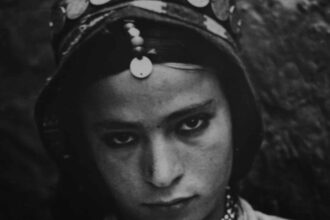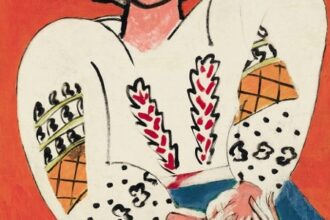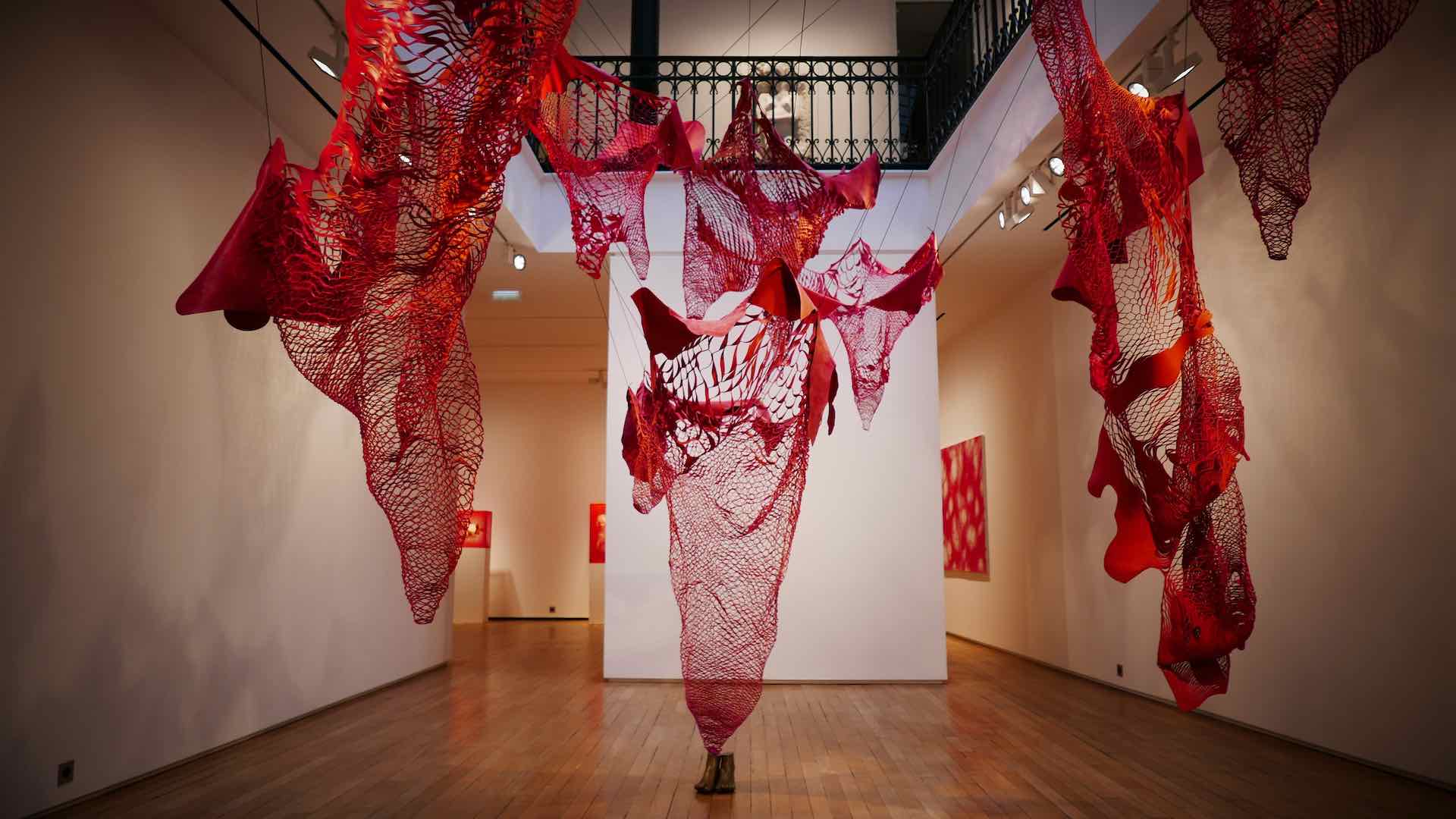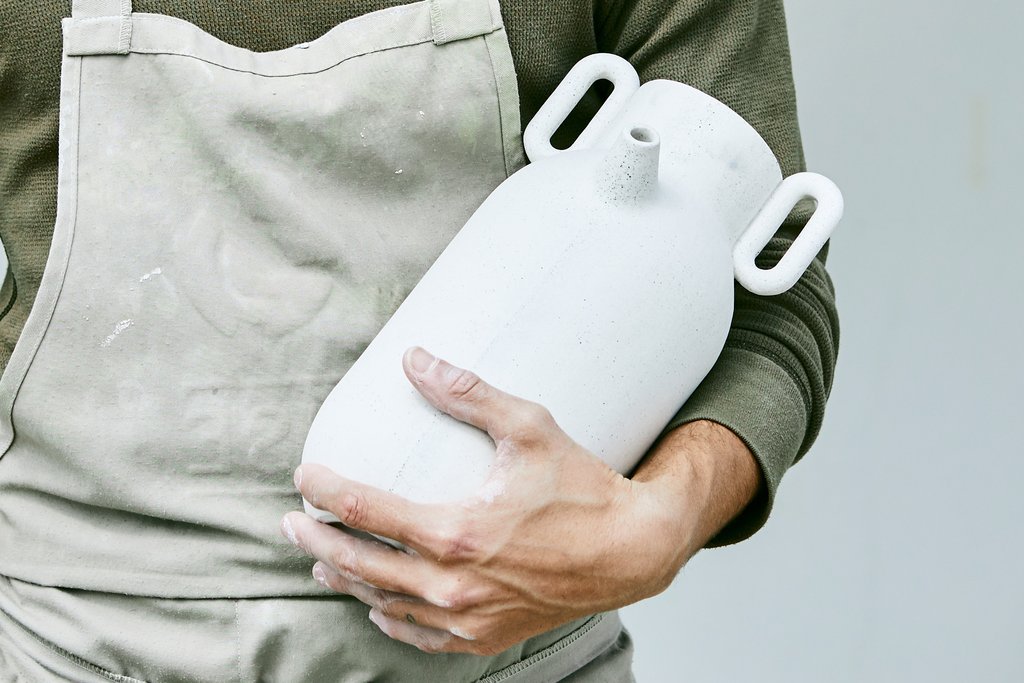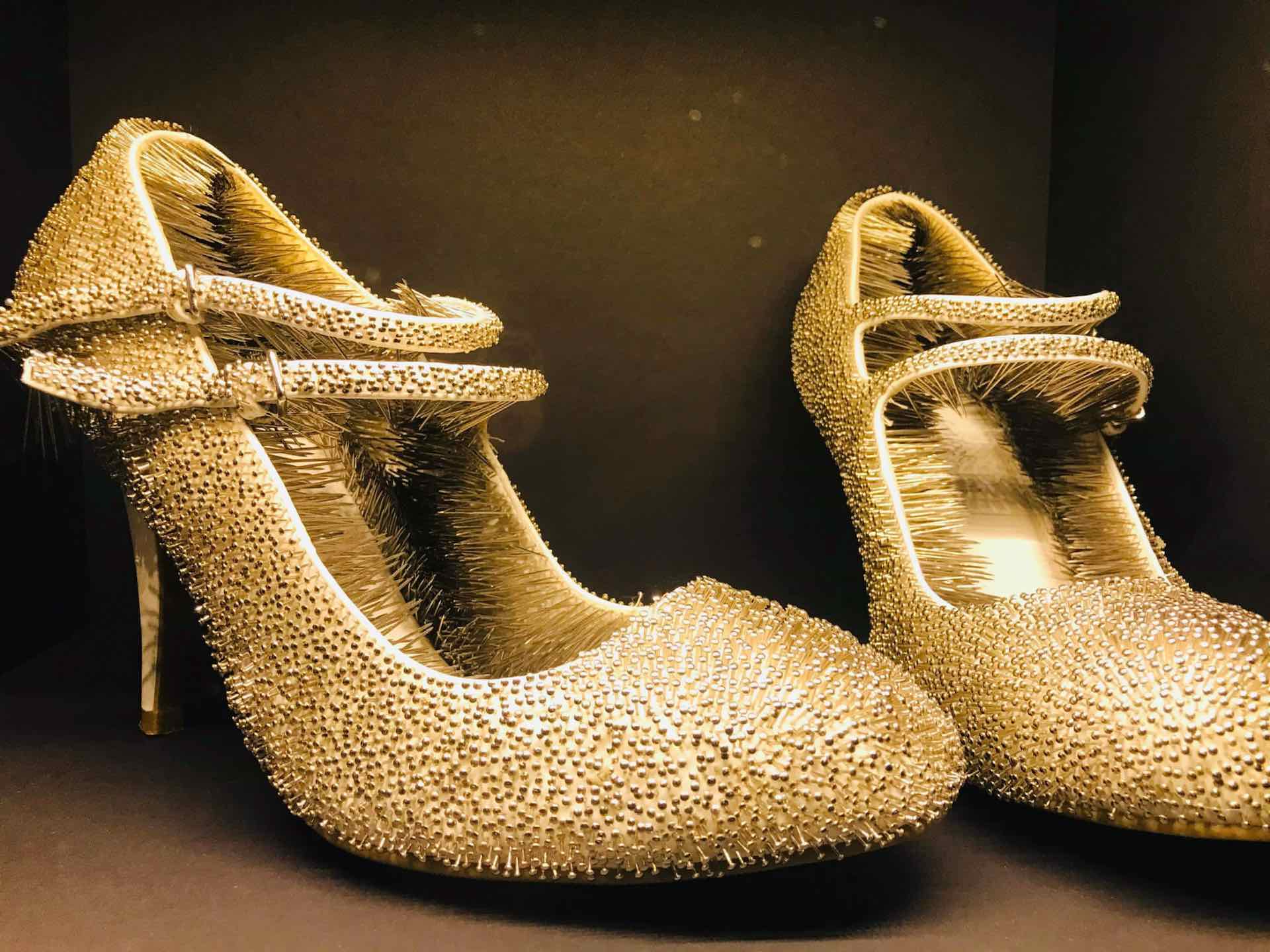exceptional Caravaggio painting solo exhibition
For the first time in France, an exceptional painting by Caravaggio – discovered in an attic in Toulouse in 2014 and authenticated in 2016 by the expert in Old Masters Éric Turquin – together with Daniel Buren’s site-specific work, Pyramidal, haut-relief.
Before being placed on auction on the 27th of June under the direction of Marc Labarbe, this classic masterpiece by the uncontested master of Italian Baroque – a tumultuous genius born in Milan in 1571, who died in Porto Ercole in 1610, responsible for only sixty five known works at the moment of the discovery – will be in hypnotic and completely unprecedented dialogue with the resolutely contemporary work of the French artist (born in 1938 in Boulogne-Billancourt).
This striking face-to-face, majestically lit by light designer Madjid Hakimi, will be present in the space at 6 rue du Pont de Lodi.
What we know about the history of the painting
The painting’s early history can be traced through four archival documents:
- A letter from Ottavio Gentili to the Duke of Mantua on 15 September 1607
- A letter from the painter Frans Pourbus to the Duke of Mantua on 25 September 1607
- The last will and testimony of the painter and art dealer Louis Finson in Antwerp in September 1617
- An estate inventory taken after the death of Finson’s associate Abraham Vinck in Antwerp in 1619.
On 25 September 1607, the Flemish painter Frans Pourbus (1569-1622) writes from Naples to the Duke of Mantua, for whom he worked, that he has seen two Caravaggio paintings, which he described as “bellissimi”, for sale in the city. They were Il Rosario,which is none other than the monumental Madonna of the Rosary, now at the Kunsthistorisches Museum in Vienna, and a Judith and Holofernes (sic).
The asking prices were enormous. The Madonna of the Rosary, a large altarpiece, was offered at 400 ducats, and our Judith and Holofernes for slightly less, at 300 ducats. Note that in April of the same year, the Duke of Mantua had paid 280 ducats for his famous Death of the Virgin, now at the Louvre.
We lose track of the painting in Antwerp in 1619. Various documents lead us to think that the two paintings were on sale in the workshop of painters and art dealers Louis Finson (1580-1617) a native of Bruges and Abraham Vinck (1575-1619) from Antwerp who were both in Naples at the time. One might imagine, although it is not certain, that it was Caravaggio himself who had entrusted them with the painting.
We know the sale does not go through because the two paintings show up in Amsterdam 10 years later in September 1617 in Finson’s will. He bequeathed them to Vinck, who was already their half-owner. The Madonna of the Rosary was purchased by a group of artists brought together by Rubens and Brueghel in order to donate the painting to the Dominicans of Antwerp. At the end of the 18th century, that painting arrived in the collection of Emperor Joseph II, and it has remained in Vienna ever since. The fate of Judith and Holofernes at that moment is unknown. It may be the painting seen in Antwerp in 1678 and then in 1689, meaning it did not leave the Netherlands in the 17th century. After that, it is material evidence – the actual canvas and stretcher used when it was remounted – that indicates that it was in France at the end of the 18th century or in the beginning of the 19th.
Kamel Mennour
6 rue du Pont de Lodi, Paris 6
April 18 - May 4, 2019



